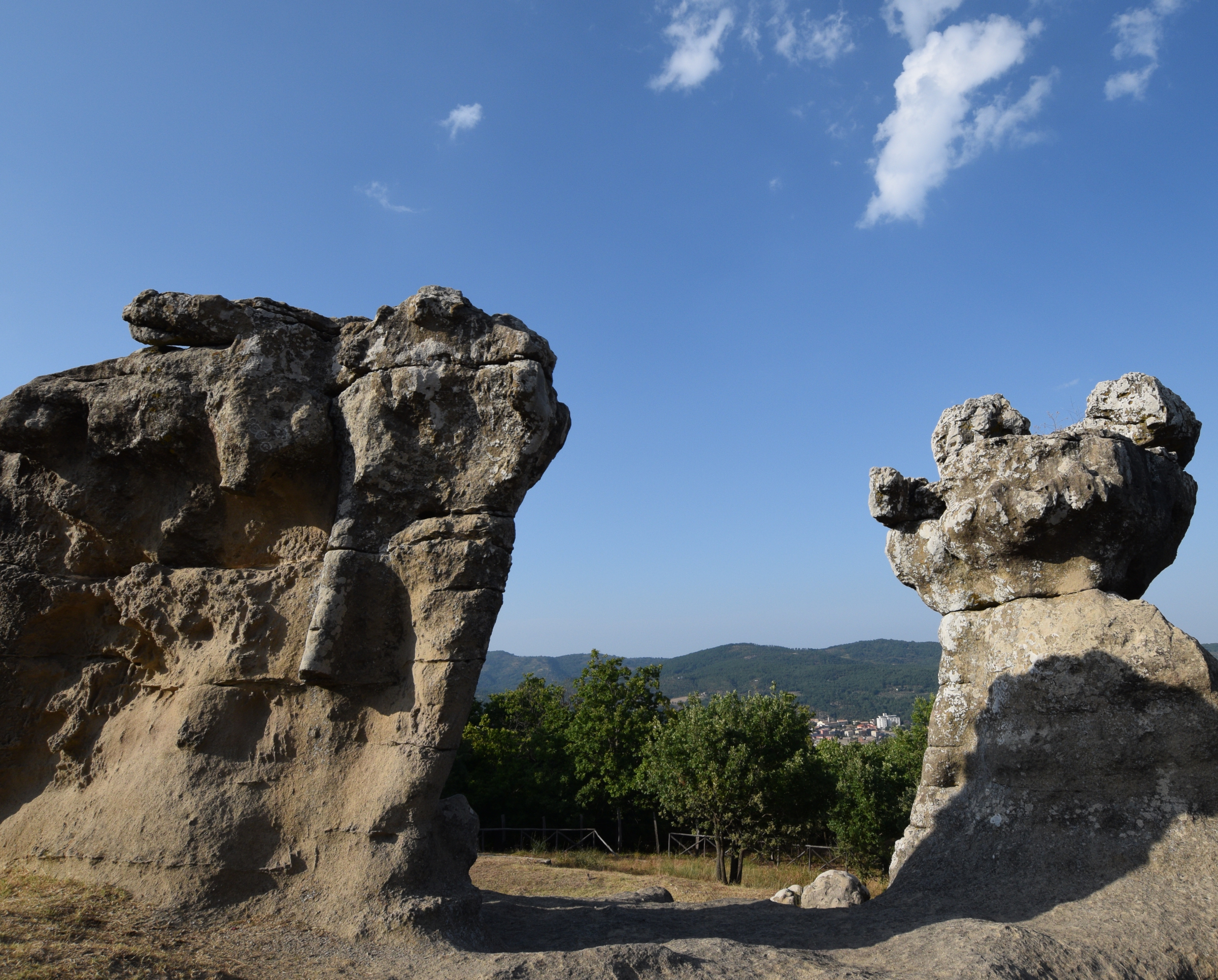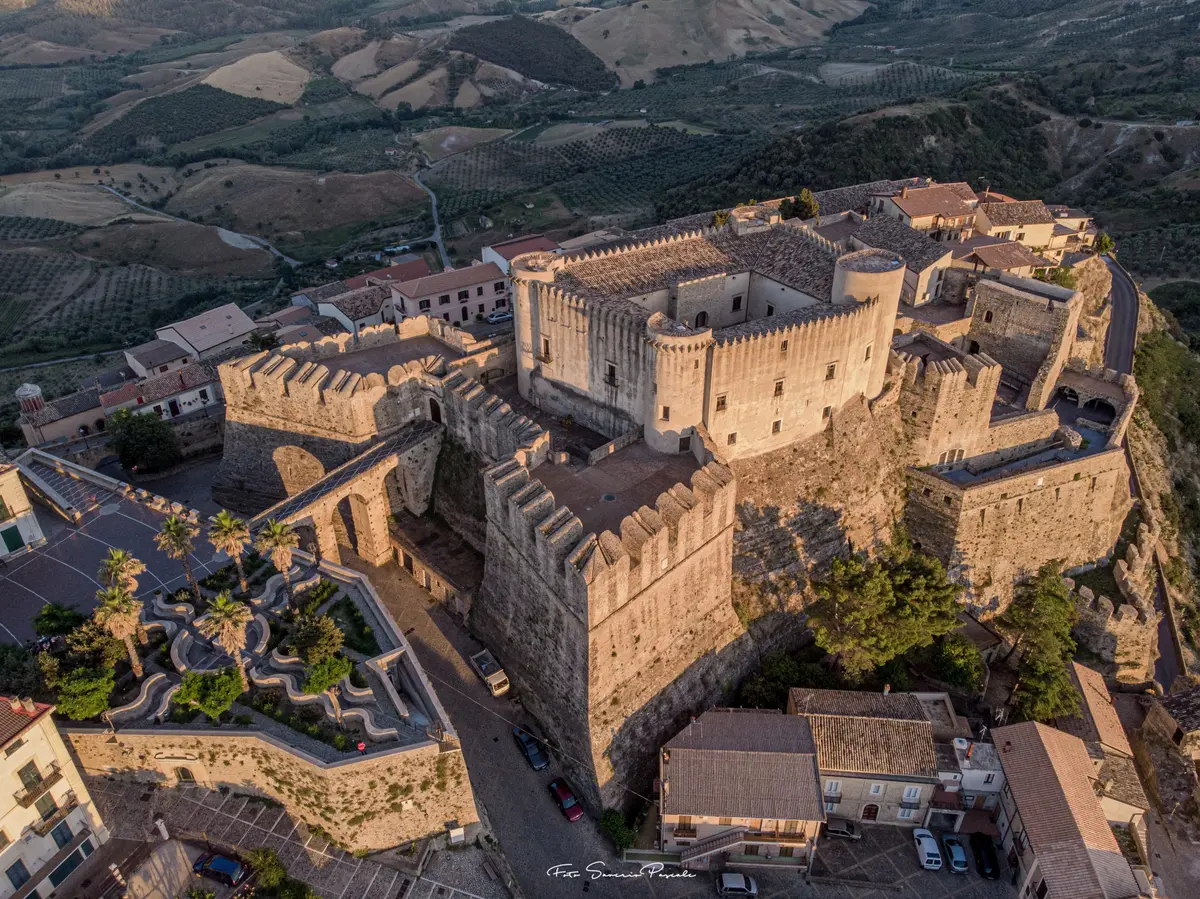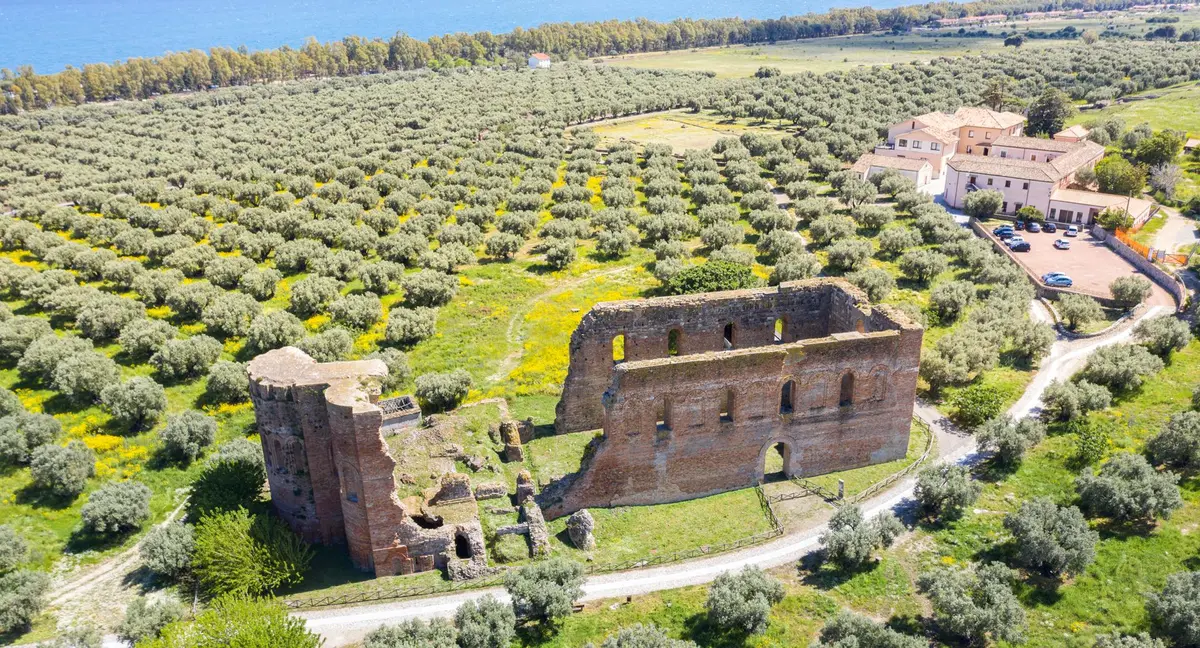Among the mysteries of the Stone Giants of Campana
Visit to the Elephant of the Incavallicata and the Caves of Campana

Art and Culture
Regione Calabria
It was some time ago, on the day of the winter solstice 2023, that one of the most fascinating discoveries was made regarding the geological site known as the "Stone Giants of Campana", from the municipality of the same name in the province of Cosenza, in the Sila National Park.
The Stone Giants of Campana, also known as the Stones of the Incavallicata, are a pair of rocky megaliths of uncertain origin, whose zoomorphic silhouette is difficult to attribute to the hand of man rather than that of atmospheric agents.
Recently, some scholars have observed a curious solar alignment between the statues at the solstice.
The Stone Giants of Campana, between history and legend
Whether they are the result of human intervention or of nature, their origin certainly dates back to the distant past, although the earliest accounts of them date back to the 17th century, when Bishop Francesco Marino described one of the Giants of Campana as
"a great colossus that fell to the ground because of earthquakes".
The two Megaliths of Incavallicata stand a short distance apart, differing in shape but not in composition: in both cases, they are two sandstone rocks eroded and mutilated by atmospheric agents, at the base of which two cavities open up.
One of the two megaliths, known as the Elephant of the Incavallicata because of its shape that recalls the animal's profile, measures 5.5 metres in height; the other, mutilated of its upper part, is 7.5 metres high and appears more amorphous, although it is referred to as the "Cyclops" or "Sitting Warrior".

The mysterious fascination of the Stone Giants of Campana also lies in the territorial context that surrounds them. In fact, they are associated with small cavities excavated in the same sandstone rock and can be morphologically associated with the type of "Neolithic caves" widespread throughout the Mediterranean Basin for funerary purposes, although, again, there is no trace of artefacts or other dating elements.
Interesting is the small abandoned village of Campana (Old Town), the municipality that hosts megaliths on its territory. This small village in the Presila of Cosenza appears crystallised in time, like an open-air film set, arranged around the imposing Mother Church with its unmistakable bell tower, a few noble buildings and a series of small dwellings with adjoining animal shelters.

The Campana area is the ideal starting point for a series of excursions in the Sila National Park, in particular to the nearby Lake Cecita, a place in turn connected to the Elephant of the Incavallicata due to an important archaeological find.
The Elephant of the Incavallicata and Lake Cecita
The hypothesis that the Elephant of the Incavallicata is a real zoomorphic statue, intentionally sculpted to represent a particular species of prehistoric elephant or "war elephant" finds some possible confirmation in an archaeological discovery that took place not far away, at the bottom of Lake Cecita.
An important natural resource in the area, Lake Cecita is located in Campo San Lorenzo, in the municipality of Spezzano della Sila. It was here that a few years ago the remains of an imposing Elephas Antiquus emerged, a species of prehistoric elephant whose presence sheds new light on the history of an area already rich in fascination, which in 2004 had also yielded evidence of Neanderthal Man.

The pachyderm in question has a large molar and 3-metre long tusks that have allowed it to be dated to 700,000 years ago (European Elephant).
Whether the Elephant of the Incavallicata depicts one of these specimens, or, as some scholars and antiquity enthusiasts claim, one of the war elephants that passed through Calabria during Pyrrhus' historic Expedition (280 BC); or, again, part of Hannibal's elephant army during the Second Punic War (216 BC), remain absolutely fascinating and plausible hypotheses, although not yet proven.
All the more reason to visit this beautiful area and the mysteries that inhabit it.
https://calabriastraordinaria.it/en/news/among-the-mysteries-of-the-stone-giants-of-campana



